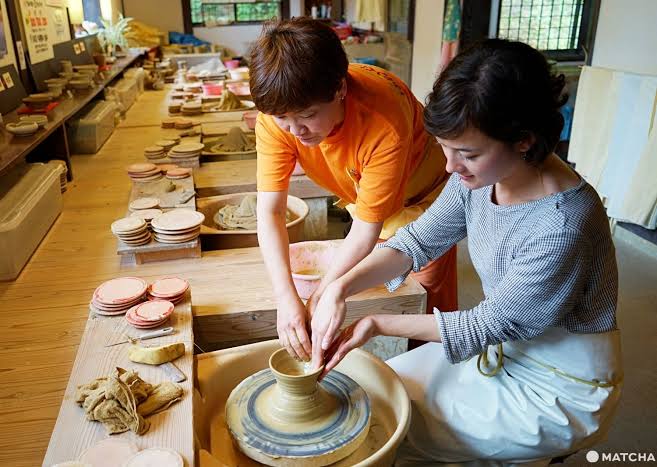Traditional arts and crafts are the foundation of many cultures, showing the heritage and identity of communities through handmade items passed down for generations. These include textiles, pottery, weaving, woodcarving, basketry, beadwork, and more. Today, with fast technology changes, traditional arts face challenges but also new opportunities. By July 2025, technology is not only a challenge but also a link that connects old traditions with the future.
Rather than erasing traditions, technology is increasingly being used to preserve, reinterpret, and revitalize ancient techniques. It is altering how craftspeople work, how their creations are distributed, and how younger generations engage with cultural heritage. Yet this technological shift is not without its drawbacks, and it raises important questions about authenticity, commodification, and the survival of human skill in the digital age.
Digitization and Cultural Preservation
One of the most significant contributions of technology to traditional arts is its role in documentation and preservation. Digital archives and 3D scanning techniques have made it possible to capture fragile artworks, textiles, and sculptures in high resolution, ensuring that even if the physical item degrades, a digital replica remains accessible for future study and appreciation.
Museums and universities worldwide are using these tools to create virtual exhibitions and databases of indigenous crafts, folk art, and historical artifacts. For example, Canada’s Virtual Museum of Canada and the Smithsonian Institution in the United States have launched digital preservation projects aimed at archiving endangered cultural expressions.
Augmented reality (AR) and virtual reality (VR) are also enabling immersive experiences of traditional art forms. Users can now “visit” craft villages, observe artisans at work, or interact with historical artifacts without leaving their homes. These tools not only help preserve knowledge but also make cultural education more engaging and accessible to global audiences.
E-Commerce and Global Reach
Technology has opened new economic doors for artisans who were once limited to local markets. With platforms like Etsy, Amazon Handmade, Shopify, and Instagram Shopping, craftspeople can now sell their products to customers around the world. This has empowered many to turn their craft into a viable livelihood, especially in regions where tourism or foot traffic has declined.
As of 2025, many governments and NGOs have begun training traditional artisans in digital marketing, e-commerce logistics, and online payment systems. This training helps them adapt to a global economy and protect themselves from exploitation by middlemen.
However, the global reach of digital marketplaces has also created fierce competition and price pressures. Artisans must now compete with mass-produced imitations or machine-made replicas that flood the internet. This has led to debates over intellectual property rights and the need to protect traditional knowledge from unauthorized commercialization.
Technological Tools in Craft Production
Modern tools and materials have significantly changed how traditional crafts are produced. While some artisans still rely entirely on manual techniques, others have adopted technologies such as laser cutting, 3D printing, computer-aided design (CAD), and digital embroidery to enhance their work.
For instance, jewelry makers now use CAD software to design intricate patterns that would be nearly impossible to create by hand. Potters can use electric kilns and 3D clay printers to replicate consistent forms while still applying hand-crafted glazes and finishes. Textile artists have begun incorporating digital looms to improve speed without sacrificing cultural motifs.
This fusion of old and new has given rise to a hybrid movement known as “techno-craft,” where traditional artisans use technology not to replace heritage, but to refine or reimagine it. Yet purists argue that these innovations dilute the authenticity of the original practices, which rely heavily on human touch, intuition, and imperfection.
Education and Knowledge Transmission
Technology has also revolutionized the way traditional arts are taught and learned. In the past, crafts were passed down orally or through apprenticeship. Today, video tutorials, live-streamed workshops, and online masterclasses are bringing the knowledge of elder artisans to a wider audience.
Platforms like YouTube, Skillshare, and Coursera now feature lessons in handweaving, batik printing, origami, woodturning, and countless other crafts. These resources have sparked renewed interest among younger generations, many of whom are eager to reconnect with their cultural roots or explore artisanal entrepreneurship.
Some schools and cultural centers have even integrated virtual reality into their art programs, allowing students to practice traditional techniques in simulated environments before applying them to real materials. These approaches enhance skill acquisition and preserve endangered practices that may otherwise be lost with aging master artisans.
The Question of Authenticity
With the rise of digital replication and mass production, one pressing issue is the erosion of authenticity. Can a product still be considered “handmade” if technology plays a role in its creation? Where does the line between tradition and innovation lie?
As of 2025, many artisan communities are advocating for clearer labeling and certification systems that distinguish between fully handmade products and those partially or wholly created using machines. Cultural trademarks and Geographical Indications (GIs) are also being explored as legal mechanisms to protect the identity and origin of traditional arts.
This concern is particularly relevant in Indigenous communities, where cultural appropriation and exploitation have long been problems. Ensuring that artisans maintain control over how their designs and techniques are used—especially in the digital space—is essential to preserving both cultural integrity and economic sustainability.
Challenges and Opportunities
Despite its benefits, the integration of technology in traditional arts is not without its challenges. Not all artisans have access to high-speed internet, digital literacy, or expensive equipment. Bridging this digital divide remains a crucial task for cultural preservationists and policy-makers.
Additionally, there is a risk that market demand will push artisans to prioritize speed and uniformity over cultural meaning and artistic expression. The pressure to conform to global trends can sometimes dilute the very uniqueness that gives traditional art its value.
On the other hand, technology offers incredible opportunities for collaboration, innovation, and cultural exchange. Artists from different regions and backgrounds can now co-create pieces using shared digital platforms, enriching each other’s practices while building bridges across borders.
Final Thoughts
Technology’s impact on traditional arts and crafts is multifaceted—at once empowering and disruptive, creative and controversial. As of July 2025, the challenge lies not in resisting technology, but in finding ways to harness it without losing the soul of tradition. The future of traditional arts will depend on how well artisans, educators, and cultural institutions can strike a balance between preservation and progress.
When used thoughtfully, technology can serve as a tool of resilience—reviving fading crafts, elevating artisan livelihoods, and ensuring that cultural heritage continues to thrive in a connected, digital world.



